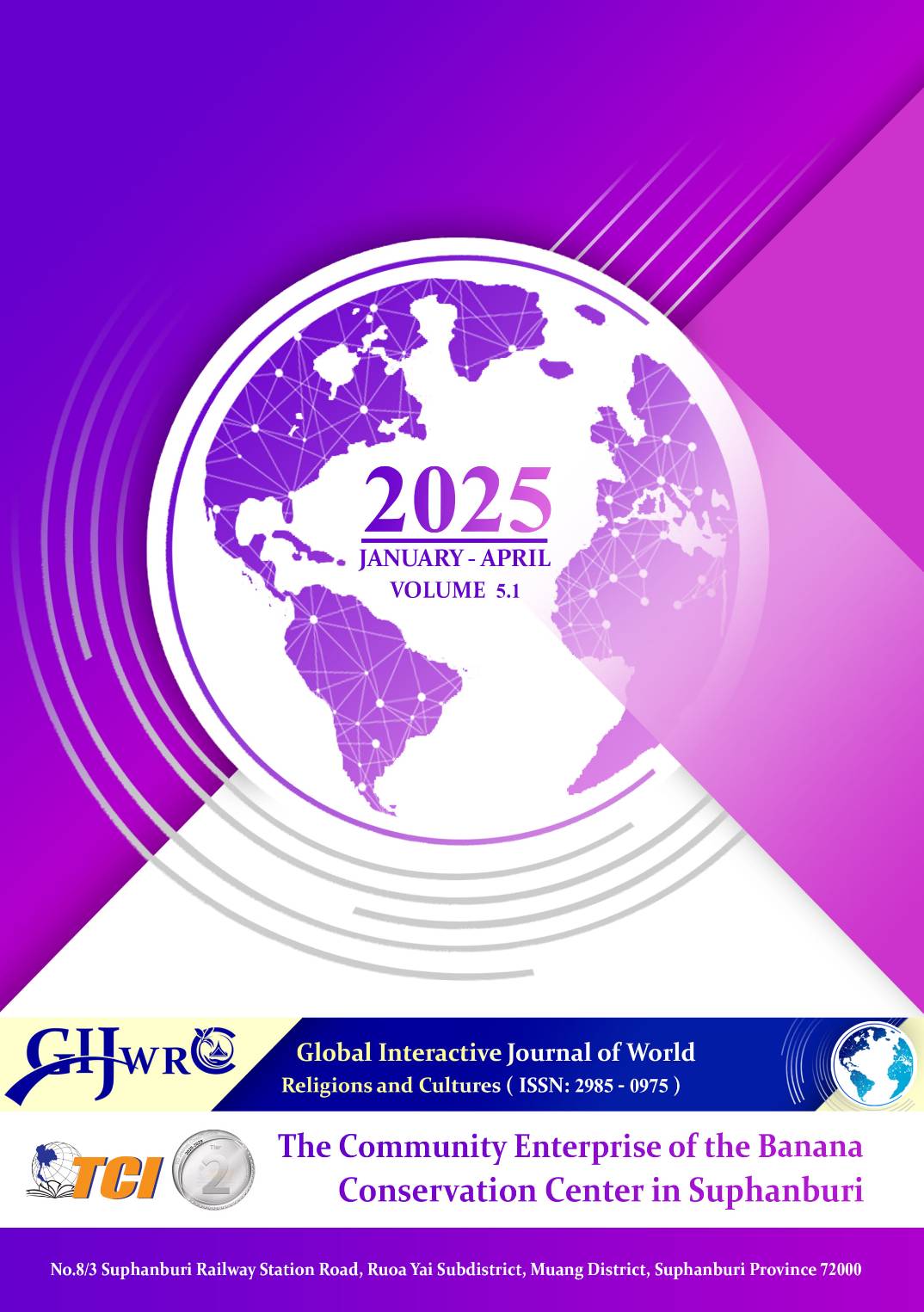CONSTRUCTING THE BLUES STYLE CHONGQING FOLK SONG FOR TEACHING THIRD-YEAR STUDENT AT CHONGQING UNIVERSITY OF HUMANITIES AND TECHNOLOGY
Main Article Content
Abstract
Chinese culture embodies a rich tapestry of traditions, beliefs, and artistic expressions that have evolved over centuries. The fusion of Blues elements with Chongqing folk songs offers a unique approach to preserving traditional Chinese music while introducing contemporary stylistic influences.. The objectives of this study are as follows: 1. To study Blues-style Chongqing folk songs as a primary source of information; 2. To develop a guidebook for teaching Blues-style Chongqing folk songs tailored for third-year students at Chongqing University of Humanities and Science; 3. To implement the Blues-style Chongqing folk songs guidebook in teaching third-year students; 4. To evaluate the effectiveness of the Blues-style Chongqing folk songs guidebook in enhancing students' technical and interpretive skills. This research employs a mixed-method approach, integrating both qualitative and quantitative methods. Qualitative tools include expert interviews and teaching observations, involving four music education experts specializing in folk and Blues fusion. Quantitative data were collected from 20 third-year students, with 10 selected as the sample group through purposive sampling. Data analysis was conducted using descriptive statistics, with the hypothesis that students’ performance scores would reach above 80 points on average by the end of the course.
The findings of the study are as follows: 1. The teaching guide significantly improved students’ technical skills, such as rhythmic precision and melodic adaptation, through a step-by-step methodology; 2. The guide deepened students’ understanding of the cultural and historical significance of both Blues and Chongqing folk music, enabling more expressive and contextually relevant performances; 3. Activities such as improvisation workshops and peer feedback sessions enhanced student engagement, creativity, and motivation; 4. The guide successfully accommodated diverse learning styles with visual aids, structured exercises, and group collaborations, leading to improved outcomes for a wide range of students; 5. Both educators and students highly rated the guide for its clarity, practical applicability, and cultural relevance in teaching Blues-style adaptations of traditional folk music.
Article Details
References
Fan, L. (2008). Exploring the influence of blues music on the development of popular music. Sichuan Drama, (5), p. 4.
Hao, J. (2006). Blues: The music and literary narrative of African American sorrow — Blues and its use in Invisible Man and Song of Solomon. Journal of Henan Normal University (Philosophy and Social Sciences Edition), (1), pp. 45-47.
Hu, R. (2019). Exploration of the development trends of contemporary Chinese popular music performance. Northern Music, 39 (1), p. 2.
Jin, Z. (2002). Popular music in broad daylight: A personal account of Chinese pop music. People's Music Publishing House.
Luo, H., Xie, Q. Y., & Zhang, J. (2006). Blues music and African American culture. Journal of Wuhan University of Science and Technology, (6), pp. 49-51.
Zhang, K., & Kang, N. (2013). A discussion on the historical changes of blues music. History Teaching: Lower Monthly, (7), p. 5.
Zhang, L. (2019). Analysis of the development trends of contemporary Chinese popular music performance. Theater Home, (20), p.1.
Zhang, W. (2017). Exploring the elements of blues music in Chinese pop songs. Northern Music, 37 (2), p. 2.
Zhang, X. (2014). Blues elements in Chinese contemporary pop music. Grand Stage, (6), p. 2.


